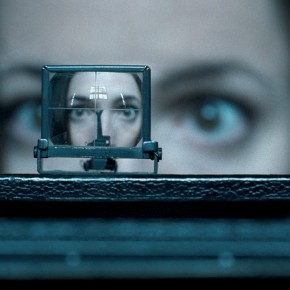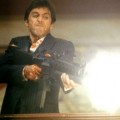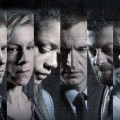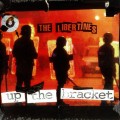The Awakening: Resurrecting The Great British Ghost Story
Without a zombie, vampire or camcorder in sight, Nick Murphy’s directorial debut delves back into British cinema's ghostly past.

Being a ghost in 2011’s Britain would probably be a bit rubbish. Sure, scot-free voyeurism and never having to pay to go to the pictures again would be great, yet these boons would be more than offset by the likelihood of spending most of your time in people’s miserable little flats, ‘Wooo-ooo-ooo!’-ing (with commendable confidence yet little result) at people either slumped watching Towie, playing Skyrim or masturbating. Or – in rare displays of energy and ambition – possibly all three.
This is a time for ghosts’ declares the pre-credits caption of Primeval and The Occupation director Nick Murphy’s feature-length debut, and - as it’s set closely after the co-clusterfucks of The Great War and the vast flu epidemic of the time – if there was such a time then this would certainly be it. Before the invention of fame-hungry, perma-oranged reality TV gonks, life-sapping videogames and ‘how many wanks in a day’ record attempts, folk were left with a lot more time to leap to absurd conclusions about how every cold spot in their house was part of the foul designs of some despicable ghoul, and not simply the result of the removal of a prominent draft excluder or some poorly installed household insulation.
Ectoplasmic killjoy Florence Cathcart (Rebecca Hall) makes a good living exposing fraudsters who exploit the grief engulfing a nation still in mourning. More a one-woman Mystery Incorporated than a lone Ghostbuster (only minus the respective bitchin’ modes of transportation), she debunks shyster séances and has found modest fame writing a book about doing so. Yet her work brings her little joy: the war cost her a husband, and this compels her to disprove the false cases in the hope of finding one that isn’t.
Her doorstep is darkened by Robert Mallory (Dominic West); teacher at an all-boys boarding school, believer of said school’s genuine haunting, and emotionally scarred war veteran. His compelling case for having a bone-fide phantom lures Cathcart into investigating, finding upon her arrival a place –from a visual standpoint, at least - so quite clearly haunted that she may as well have admitted defeat before even setting foot in the grounds, before turning the car around and going to get another job doing something else, possibly something nice in an office.
Yet, for the sake of a narrative that lasts longer than ten fairly dull minutes, she begins her investigation, accepting the assistance of the consistently excellent Imelda Staunton’s school matron, who she finds to be similarly sceptical. Being a fan of Cathcart’s book, it was the Matron who originally suggested requesting her assistance in the first place, as despite her cynicism and staunch insistence on ignoring what is plainly evident to everyone else, she has had the proverbial willies put right up her, so to speak.
The vast majority of the scares are of the ‘jump’ variety, and these are signposted more clearly than most junctions on the M25.
And to says this is his first film, Nick Murphy certainly does a fine job of gradually building atmosphere and tension, investing considerable time in the establishment of the characters in order to place the rest of the film on sure footing once the bumps in the night and inevitable silliness start to escalate. The stately home-esque school itself, placed in the desolate moors and Autumnal hues of the perennially gloomy north of England, is a perfect setting for the suggestive creaks of floorboard and blink-or-you’ll-miss-them almost-sightings that serve British ghost stories so well.
The problem is, it doesn’t really do anything that hasn’t been done before. Its setting benefits from the inescapable fact that kids and big old houses are inherently creepy (and dead kids within big old houses doubly so), but borrowing tropes from films such as Guillermo del Toro’s The Devil’s Backbone, The Orphanage, The Haunting (the 1963 version, not Speed helmer Jan de Bont’s masticated chod of a remake) and The Others only actually brings to the fore the unfortunate superiority of those films in comparison to this one.
This is because, after the promising first half, The Awakening’s cracks begin to show: the vast majority of the scares are of the ‘jump’ variety, and these are signposted more clearly than most junctions on the M25. For instance: there’s a small hole in one of the house’s walls. What do you think happens when our protagonist tentatively kneels down to peer through this hole? Yes. That.
The scares being more predictable that an unwanted erection on a bus doesn’t completely neuter the film, as - much like a bus-stiffy - these can still be effective, yet the pleasure of going along with a ride to which you already know the route is never as much fun as being properly surprised.
Logic also ends up taking a back seat in the final third as Murphy begins to throw everything at the screen, in doing so negating the escalation of tension (that he achieved through little more than some photographs, word-of-mouth accounts and excellent, swelling sound design) laid down so carefully before. Plus, a ‘shock’ development (which, incidentally, doesn’t), simply doesn’t hold up to close scrutiny once the credits have rolled: “but wasn’t he..?”, “but surely they…?”, “but does that mean…?” you’ll say, while getting the impression that if you were to ask the film it would shrug nonchalantly in response and roll a fag.
The sense of the The Awakening collapsing under the weight of itself is disappointing because - despite these criticisms - there’s certainly a lot to enjoy here. It’s fun, well-made, decently acted, a tantalisingly assured debut from Murphy, and it is a welcome celebration of a classic form of horror that didn’t need camcorders, zombies, or people shitting with gusto into each other’s mouths in order to unnerve.
It’s a solid, old-fashioned ghostly romp that - with a bit more restraint - could have been great.
Click here for more stories about TV & Film
Click here to follow Sabotage Times on Twitter
Click here to follow Sabotage Times on Facebook
If you like it, Pass it on
 COMMENTS
COMMENTS
No comments yet, be the first!


 RELATED
RELATED







 SABOTAGE
SABOTAGE





